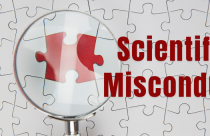Dealing With Bias in Academic Research

What is Bias in Research?
The act of a researcher influencing the process of a systematic investigation either knowingly or unknowingly is termed as “Bias in Research”. Research bias is one of the reasons for the poor validity of research outcomes. It is a huge obstacle for researchers in achieving credibility and accuracy. When allowing their personal beliefs influence their methods to attain a certain outcome, they are missing the first principle of researching: impartiality. But, can researchers avoid working with bias? Do they always have an agenda?
Let’s take a look at some tips to recognize and minimize researcher biases, in order to avoid improper procedures and unethical behaviors.
Evaluating Bias in Research
The amount of bias in research that we can find depends on how susceptible is the research to personal emotions. Thus, a research in social studies is much more susceptible to bias than one in physics or medicine. Fields as sexuality, religion, education, or politics have usually a propensity to influence researchers’ procedures, due to their culture or personal beliefs. For instance, a researcher from a western non-Islamic country would probably have a certain opinion about women’s obligation to wear burqa. Bias against this fact can reduce the impartiality when researching women’s situation in some Islamic countries. Dealing with numbers and statistics is not as susceptible to bias as doing it with qualitative facts. When making qualitative researches, it is easy to make some selection, interview or measurement bias. Regardless of which topic the research is about, falling into the trap of researching biases is —relatively— easy. Below you can find some tips to follow in order to avoid biases and achieve an impartial and professional academic research.
Types of Bias in Research
Bias in research can be avoided if the source of bias is traced. Common examples of types of bias in research are mentioned below:
1. Design Bias
Design bias occurs when the research design, survey questions, and research method is influenced by the preferences of the researcher rather than its suitability to the research work. Furthermore, design bias occurs when personal experiences of researcher influences the choice of the research question and methodology.
Example: A researcher is involved in the manufacturing process of a new pharmaceutical product may design a survey with questions that only emphasizes the strengths and positive effects of the product in question.
2. Selection or Participant Bias
Participant bias manifests when the research criteria and study inclusion method excludes some part of your participants from the research process.
Example: Administering online survey limits it to individuals that have access to internet services.
3. Publication Bias
Publication bias is often imposed on researchers by the publication criteria of journals for research papers in a particular field. Researchers formulate their papers to meet the criteria of journals and may ignore information or methods that are not in line with them.
Example: Research papers in quantitative research are more likely to be published if they contain statistical information. On the other hand, a qualitative research may face publication bias study methodologies and findings are not presented in depth.
4. Analysis Bias
Analysis bias arises during data processing. While sorting and analyzing data, the researcher may focus on data samples that confirm his/her thoughts, expectations, or personal experiences.
Example: While conducting a research on cannabis, a researcher pays attention to data samples that support the negative effects and ignores the positive effects that it offers.
5. Data Collection Bias
Data collection bias occurs when the researcher’s personal preferences or beliefs affect how data samples are collated in the systematic investigation. Data collection bias happens in both qualitative and quantitative research methods.
Example: Data collection challenge for completing your survey via email or your website for individuals who do not have access to the internet.
6. Procedural Bias
Procedural bias is a type of research bias that occurs when the study participants do not have sufficient time to complete the survey.
Example: Requesting participants to complete a survey quickly to access an incentive. This may lead them to fill in false information just to complete the survey in time.
How to Reduce Bias in Research
- Get to know yourself: Before starting your research, take your time to study the situation. What do you want to achieve? And why? Try to discover what moves your determination in this case and if your personal beliefs and influences made you take the resolution of starting this academic research. Then, try to figure out which type of biases can compromise your research and write them down.
- Figure out what you don’t expect: It is a common mistake not to consider what we don’t want to achieve as bias. Make the same exercise the other way around: write down what you wouldn’t like to achieve while researching. Does it help to recognize your bias?
- Avoid interview bias: Outcomes of academic research are often determined by interviews’ results. Try to ensure that your questions are not steering particular responses, or making the interviewee understand the situation in a certain way.
- When checking interview bias, consider measurement bias as well. Checking if you are interviewing different groups of people is also particularly important. Don’t more questions to a certain group of population or leave some of them out, especially when dealing with qualitative researches.
- Widen your range of possibilities: Try to take in account all the possible facts, variables and ideas that can have a point in your research. Don’t forget adding exceptions: omission bias is a common mistake.
- Choose your vocabulary wisely: When writing, try to avoid ambiguous or too general words. For example, if your research shows that 60% of girls from 9 to 12 years old practice sports regularly, don’t write “Girls practice sports”. Be precise and focus on facts. In order to do that, avoid using too many adjectives or general nouns or pronouns.
It is especially important to avoid generalization related to certain population segments, as religious or political groups. The fact of mentioning “women”, “Christians”, “Muslims” or “disabled”, for example, is considered a clear way of showing bias in research. Instead of that, try to be precise: “50 years old married women”, “people who are diagnosed with a paralysis disorder”, etc. And last but not least: when your research is complete, check the notes you wrote when you started researching. How well did you manage your bias? Let us know in the comments section below!
You can also visit our Q&A forum for frequently asked questions related to different aspects of research writing and publishing answered by our team that comprises subject-matter experts, eminent researchers, and publication experts.









